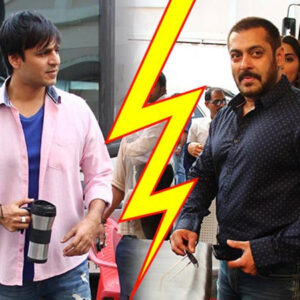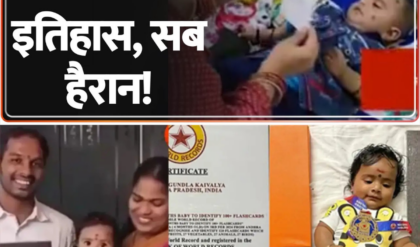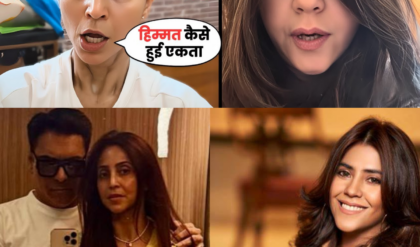Bollywood in a BIG CRISIS: What’s Behind the Decline? | Dhruv Rathee Explains
The glitzy world of Bollywood has captivated audiences worldwide for decades, producing countless films that have shaped pop culture and inspired generations. But as we witness an unprecedented crisis in Bollywood, the industry is experiencing a startling decline, leaving fans and critics alike questioning the future of India’s cinematic powerhouse. In Dhruv Rathee’s latest video, “Bollywood is in a BIG CRISIS! | Downfall of Bollywood,” he takes a deep dive into the roots of Bollywood’s struggles and outlines the issues affecting its place in both Indian and global cinema.
This article explores some of the critical points Rathee raises, shedding light on Bollywood’s pressing issues and prompting a much-needed conversation on how the industry can return to its former glory.
1. Stagnant Storylines and Lack of Innovation
One of the first problems Dhruv Rathee highlights is Bollywood’s struggle to break free from repetitive storylines and overused tropes. For years, Bollywood has relied on formulaic plots that tend to revolve around predictable romantic entanglements, action-packed sequences, or overblown melodrama. These types of narratives worked well in the past when audiences eagerly embraced escapist entertainment, but today’s viewers, who have access to a diverse range of global content on streaming platforms, expect more originality.
The rise of OTT platforms like Netflix, Amazon Prime, and Disney+ Hotstar has given audiences access to unique, well-crafted stories from around the world. Compared to these, Bollywood films often fall short, lacking the freshness and depth viewers now seek. Rathee argues that unless Bollywood takes more creative risks and diversifies its storytelling approach, it will continue to lose ground to international and even regional Indian cinema.
2. Nepotism and Insider Culture
Nepotism has been a long-debated issue in Bollywood, but it came to the forefront especially after the tragic passing of actor Sushant Singh Rajput in 2020. Rathee notes that this event stirred public anger toward Bollywood’s insider culture, where star kids and industry insiders often get a significant leg up, making it difficult for outsiders to break in and succeed.
This culture of nepotism not only limits the pool of talent but also affects the quality of films, as actors who are selected based on family ties may not necessarily bring the skills and dedication required to create compelling characters. While nepotism exists in many industries, the Indian audience’s dissatisfaction with it has grown, leading many to turn to alternative cinema that showcases fresh and authentic talent.
3. Content Quality vs. Commercial Success
Bollywood’s fixation on box-office numbers and commercial success has often come at the cost of meaningful storytelling. Rathee points out that many Bollywood filmmakers are under pressure to prioritize profit over quality. This pressure has led to a string of big-budget films with star-studded casts but mediocre content. In contrast, smaller-budget films, which often feature relatively unknown actors and more daring narratives, rarely receive the attention or promotion they deserve.
This imbalance is problematic, as it hampers Bollywood’s potential to produce diverse and impactful cinema. The result is a disenchanted audience that’s increasingly seeking films that offer substance over spectacle. Rathee suggests that the industry needs to refocus on producing high-quality films, even if they are not necessarily big box-office hits, in order to win back viewers who have grown disillusioned.
4. The Rise of Regional Cinema
One of Bollywood’s biggest challenges today is the rising popularity of regional cinema. The film industries of the South—particularly Telugu, Tamil, and Malayalam cinema—are producing films that are not only engaging but also resonate deeply with local cultures while delivering universal appeal. Movies like “Baahubali,” “Pushpa,” and “RRR” have redefined Indian cinema and shown that compelling storytelling, technical expertise, and strong characterization can bring films massive success domestically and internationally.
Rathee observes that regional cinema has successfully tapped into audiences that Bollywood has increasingly alienated. By telling more grounded, culturally relevant stories, regional films have gained a loyal following that has cut into Bollywood’s traditional dominance. For Bollywood to stay relevant, Rathee insists it must take a page out of regional cinema’s book and prioritize authenticity and quality over big-budget glamour.
5. Social Media Influence and Public Backlash
The impact of social media on Bollywood is profound. Platforms like Twitter, Instagram, and YouTube have made it easy for fans to voice their opinions and for influencers to shape public perception. Dhruv Rathee highlights that with growing scrutiny on Bollywood’s decisions, be it regarding casting or content choices, the industry faces constant public backlash. Many of Bollywood’s prominent stars have become polarizing figures, with audiences sometimes boycotting films to protest against an actor’s public statements or actions.
This level of public scrutiny is unprecedented and has placed Bollywood in a challenging position. Now more than ever, the industry must be mindful of its public image and the kind of content it promotes. Rathee suggests that Bollywood needs to use this feedback constructively rather than seeing it as a threat. By aligning more closely with audience expectations, the industry may begin to regain its lost credibility.
6. The Way Forward for Bollywood
Despite these pressing issues, Dhruv Rathee believes that Bollywood is not beyond saving. He advocates for a combination of innovative storytelling, openness to fresh talent, and a conscious effort to address audience feedback. By focusing on content quality, valuing genuine talent, and staying culturally relevant, Bollywood can potentially rebuild its reputation and appeal.
Rathee’s video concludes with a call to the industry to rethink its approach, inviting both filmmakers and audiences to participate in a collective transformation. The future of Bollywood depends not just on its ability to adapt to changing times but also on its willingness to learn from past mistakes.
Final Thoughts: Will Bollywood Overcome the Crisis?
Bollywood’s current situation is indeed challenging, but it also presents an opportunity for growth and reinvention. The industry has a rich history and a loyal fan base, both in India and around the world. However, to continue thriving in this new era of digital content, Bollywood must confront its flaws and evolve.
Curious to learn more about the deep-rooted issues in Bollywood and what can be done to address them? Dhruv Rathee dives deeper into these topics in his insightful video. Watch now to gain a fuller perspective on Bollywood’s crisis and the potential solutions ahead!
Click here to watch Dhruv Rathee’s full video: Bollywood is in a BIG CRISIS! | Downfall of Bollywood
Rathee’s analysis offers a thought-provoking look at Bollywood’s future—don’t miss out on this eye-opening exploration of India’s film industry and what lies ahead!
News
Actress Mamta Kulkarni Returns to Mumbai After 25 Years After Bombay HC Drops FIR In Drug Case
Actress Mamta Kulkarni Returns to Mumbai After 25 Years After Bombay HC Drops FIR In Drug Case In a dramatic turn of events, Mamta Kulkarni, the enigmatic Bollywood star of the 90s, has made headlines again, this time for stepping…
Rashmika Mandanna and Salman Khan Gear Up for Electrifying Dance Number in Sikandar – Behind-the-Scenes Look!”
Rashmika Mandanna and Salman Khan Gear Up for Electrifying Dance Number in Sikandar – Behind-the-Scenes Look!” Rashmika Mandanna and Salman Khan Gear Up for Electrifying Dance Number in Sikandar – Behind-the-Scenes Look!” Rashmika Mandanna and Salman Khan Rehearse for an…
Nargis Fakhri Involved in Shocking Double Murder Case: Sister Arrested! The Truth Behind the Bollywood Scandal!
Nargis Fakhri Involved in Shocking Double Murder Case: Sister Arrested! The Truth Behind the Bollywood Scandal! Nargis Fakhri Involved in Shocking Double Murder Case: Sister Arrested! The Truth Behind the Bollywood Scandal! Bollywood, with all its glitz, glamour, and fame,…
Deepika Padukone and Rashmika Mandanna’s Behavior with Media at the Airport Who Won Heart
Deepika Padukone and Rashmika Mandanna’s Behavior with Media at the Airport Who Won Heart Deepika Padukone vs. Rashmika Mandanna: Who Won the Media’s Heart at the Airport? Airports are often the stage for many stars to show their true colors,…
Revealed: Vivek Oberoi’s Deceptive Marketing Strategy Exposed by Actor-Critic!
Revealed: Vivek Oberoi’s Deceptive Marketing Strategy Exposed by Actor-Critic! Revealed: Vivek Oberoi’s Deceptive Marketing Strategy Exposed by Actor-Critic! In a world dominated by social media and influencer culture, marketing strategies can often blur the lines between truth and fiction. It’s…
Vivek Oberoi’s Bold Statement That Could Make Salman Khan Red-Faced”
Vivek Oberoi’s Bold Statement That Could Make Salman Khan Red-Faced” Vivek Oberoi’s Bold Statement That Could Make Salman Khan Red-Faced” Bollywood has always been home to colorful personalities, heated rivalries, and moments of drama. Among the most talked-about feuds in…
End of content
No more pages to load











